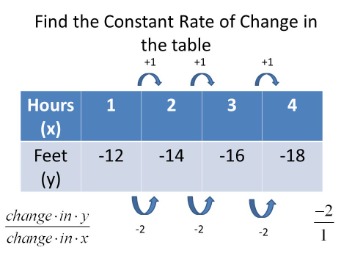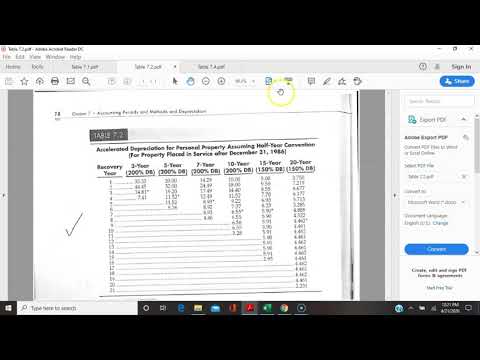
For lawyers, account reconciliation is particularly important when it comes to trust accounts. For example, you may need to reconcile your trust account bank statement with client balances at a specific frequency, such as monthly or quarterly. Take note that you may need to keep an eye out for transactions that may not match immediately between the sets of records for which you may need to make adjustments due to timing differences.
We and our partners process data to provide:
Account reconciliation software is a computerized program that automates the account reconciliation process, making it more streamlined, quicker, and easier to execute than using paper-based manual spreadsheets. Another what is the matching principle in accounting factor that seems to be unavoidable, no matter how diligent your accounting team is, is the total boycott of a transaction. Comparing accounts helps you spot transactions you have missed and keeps all your records as consistent with each other and accurate as possible. The errors should be added, subtracted, or modified on the bank statement balance to reflect the right amount. Once the errors have been identified, the bank should be notified to correct the error on their end and generate an adjusted bank statement. Balance sheet account reconciliation can cover everything from cash and investments to liabilities and shareholders’ equity (any accounts found on the balance sheet).
Final thoughts on reconciliation in accounting
Its powerful matching algorithms quickly identify and resolve variances, increasing speed and accuracy. This blog delves into the essentials of account reconciliation, outlining the step-by-step process, and exploring the various types of reconciliation. Understanding this fundamental practice is vital for businesses aiming to achieve accurate financial reporting and make informed decisions. In single-entry bookkeeping, every transaction is recorded just once rather than twice, as in double-entry bookkeeping, as either income or an expense. Single-entry bookkeeping is less complicated than double-entry and may be adequate for smaller businesses.
When you identify significant discrepancies in your company’s financial statements, it’s time to dig in deeper. If there are still discrepancies after you’ve made the necessary adjustments, you might need to consider an audit to rule out fraud or hold the responsible parties accountable. Without account reconciliation, businesses would have a hard time identifying and preventing balance sheet errors, which could raise concerns in the event of an audit.
- It’s important that your accounting team balance the books accurately, lest you miss out on spotting issues early.
- Reconciliation in accounting is an important means of keeping an eye on how much money the business is spending each cycle and avoiding any surprises.
- By systematically reconciling accounts, businesses can ensure they are working with the most accurate, up-to-date financial information.
- Banks and retailers can make errors when counting money and issuing cash to customers as change.
- Some of the possible charges include ATM transaction charges, check-printing fees, overdrafts, bank interest, etc.
This discrepancy could be due to outstanding checks or deposits that the bank hasn’t yet processed. Versapay integrates with your ERP to automatically apply payments made within the platform to their respective invoices. With our advanced cash application tools, we use optical character recognition (OCR) and AI to automate matching for payments outside the platform too. Even with an online payment portal, you’ll still get payments the basic financial statements financial strategy for public managers coming in from outside of the platform via checks or electronic payments. With an AR automation platform that has built-in image recognition and AI-enabled matching capabilities, you can automate the majority of those applications too.
common causes of account reconciliation discrepancies

Nonetheless, account reconciliation, in this case, bank account reconciliation, works in the following ways. Different automation software, which uses statistical models to provide mostly accurate estimations for this method, is available on the internet. Accounting errors are noted where there is a significant variation from the estimated projection. Upon investigation, the company discovers an accounting error where a zero was omitted and rectifies the record to bring the revenue value to $45 million, which is close to the estimated revenue projected. Accountants then make research, investigate, and take appropriate actions to correct the discrepancies.
How collaborative AR automation software simplifies account reconciliation
This reasons for low retail sales per square foot type of account reconciliation refers to the process by which a company compares its bank account balance as reported in its books to bank statements from its financial institution. Companies can perform bank reconciliations as often as needed to ensure consistency between these documents. Historical details of cash accounts or bank statements are used to identify irregularities, balance sheet errors, or fraudulent activities. One example of where this method is used is a case scenario involving a company that records an average annual revenue of $50 million based on historical records. Account reconciliation is the process of cross-checking a company’s account balance with external data sources, such as bank statements. Its purpose is to ensure accuracy and consistency of financial data, which is vital for informed decision-making and maintaining financial integrity.
As important as account reconciliation is in accounting, there is not much focus on it in accounting classes. In fact, many accountants can enjoy a successful career without having to perform a single account reconciliation. After scrutinizing the account, the accountant detects an accounting error that omitted a zero when recording entries.
Conversely, when your company makes a purchase, the cash used would then be recorded as a credit in the cash account and a debit in the asset account. While comparing documents, check to see that all outgoing transactions are reflected in both the internal record and the bank account statement. For instance, you check for deductions in your internal records that have not been captured in your bank statement. The company’s bank is contacted to get information on these additional or missing transactions and a discovery is made that it was indeed a bank error. It is reimbursed for the incorrect deductions and rectification of these transactions brings consistency and accuracy to the receipts account, bank statement balance, and cash book balance. A good example of where this method is in play is where a company maintains a record of all its receipts for purchases made and, at the end of an accounting period, embarks on account reconciliation.
At its core, account reconciliation involves comparing two sets of records to check that the figures match. By prioritizing reconciliation in accounting, lawyers and law firms can maintain financial accuracy and compliance, but that doesn’t mean that lawyers need to spend hours each day looking at accounts on paper or in Excel. By leveraging technology for more efficient reconciliation processes, lawyers can save time and greatly reduce the chance of error. Account reconciliations should be performed regularly, ideally monthly, to ensure financial records are accurate and up-to-date. Such regular and timely reconciliations support financial integrity and informed decision-making.

